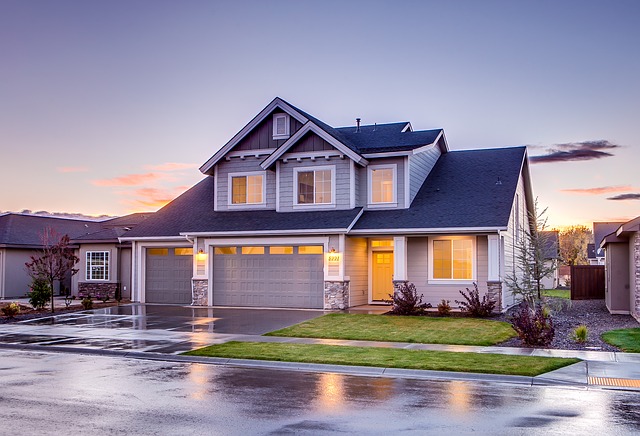Measuring is the most important step for roof replacement or upgrades. Prior to beginning a roofing project or requesting an estimate, it is a good idea to measure your roof. This step will give you a good base on the total cost of your potential project. There are a few steps to consider when checking the roof square footage and getting an exact measurement. Here are some step by step instructions and tips to consider:
1. Roof Shapes
There are about 8 common roof shapes to consider when mapping the roof replacement. The first step is to identify the current roof type. Fred Franks an owner of an Ocala roofing company states, “The first step is to identify the current roof type.” Here is the list and descriptions of a few general types:
- Full Hip Roof: All sides slope gently downward
- Gable Roof: Slopes down in opposite directions on 2 sides (common)
- Gambrel Roof: Double slope on both sides — which gives the illusion of a curve (barn style)
- Shed Roof: Slopes down in one direction with a high point one side (shed style)
- Flat Roof: Slopes about 10 degrees — mainly flat (common on apartments and businesses)
- Mansard roof: Four sided barn style roof (gambrel) often contributes to the walls of the upstairs living quarters with windows
- Butterfly Roof: Inverted roof design with a V shape (modern)
- Combination Roof: Uses various version of roof designs in one.
2. Roof Extension
After deciding which type of roof you have, it’s time to consider the type of extensions. Roofs with windows, second floors and garages usually have roof extensions called hips and valleys or dorms. A valley is a part of the roof that divots down similar to a butterfly roof inversion but more common in homes that extend the gable out for a garage or a second floor widow (dorm window). It is important to measure these extensions, even the dorm. If these parts are missed then it can change the project estimate.
3. Simple Math for Roofing
In order to measure the square footage of a roof plain it is best to understand the area of a square. The area of a square is measured by length (base) X height (same thing for rectangles, as long as the 4 sided object has a 90 degree angle at each corner). For example, if you have a common two sided gable roof, the best way to measure the square footage is by measuring the area of each plain and then adding them together to get the total roof square footage. If the home has a garage or dorm window you can do separate measurements for these and then add them to the total. For hip, combination or mansard roofs it is best to understand the area of a triangle and a trapezoid. Some roofs are made up of several repeating shapes like trapezoids and/or triangles, as well as rectangles. Simple formulas will be listed below; once you discover the shape just add the areas of each plain together to get the total square feet:
- Square (rectangle) area: base X height
- Trapezoid Area: [(Base 1 + Base 2) X Height] ÷ 2 (Note: Base 1 is the short top and Base 2 is the long bottom) multiply by the height then (divide by 2)
- Triangle: Base X Height X ½
(Note: For more complex shapes like octagons, consider their general shape or do your research on proper formulas for odd shapes)
4. Tear Off/ Roof Removal
Once the dimension of the roof is measured, it’s time to estimate the cost of removal. Removal can be cheaper if you have one layer of roof installed. Some older homes may have two layers that need to be removed. Often some homeowners opt in to have the original layer left and a new layer added on top. Keep in mind this can only be done once, there is not an option for a 3rd layer. A third layer can make the oldest layer 40+ years old and concealing damage and add too much weight or instability. Once it has been determined if there are one or two layers of roofing then you are ready to estimate the cost of removal.
5. Roof Types
The best roof type will depend on the age of your home, the roof shape and the current roofing installed. You are now ready to determine the type of roof you want installed. Common roof type are shingles (asphalt, wood or Solar), metal, slate or tile roofing
(Note: there are other roof types, these are the most common).
- Shingle roofs are the lowest initial cost roof on the market. They can be sold as asphalt and treated wood. There are other variations but these are the most common. The pro of shingle roofs is the ability to DIY the installation ( for asphalt), and the up front cost is lower on asphalt. The cons are their inability to last longer than 20 or so years, also they are not often recycled which negatively contributes to landfills. Cheap shingles can last 10-12 years without notice. (Note: treated wood can be more costly because of the type of material)
- Metal roofs are pricier than shingles however they last a lot longer. Metal roofs are very eco friendly and can be continuously recycled. There are metal roof tiles that can mimic shingle.
- Slate is a luxury roof style, however, it is more expensive than metal roofs and is susceptible to damage if walked on (which make chimney sweeping difficult).
- Solar tiles are the most expensive tiles at about $22 to $30 a square foot. They are said to bring long term rebates to the home like eliminating the electric bill or potentially receiving 30% tax credits. This tile is not yet in a lot of homeowners price range and the benefit is not well seen for the short term of the product. However, for long term investments it is worth considering.
6. Installation
After properly mapping your home, it will be easier to estimate the potential cost for everything. It is time to consider the time it will take to install said roof and the best time of year for it. If you are replacing the roof yourself, consider the amount of time you have to do it and the potential weather forecast. If the roof replacement will take a licensed contractor 2 days then it can take an unlicensed single person 5-7 days to complete properly. The first step is to make sure all framework of the exterior roofing is up to pare and not damages by water or pest, etc. Proper underlayment will need to be installed depending on the type of roof and the condition of the bare roof after shingle removal. After proper parts are installed then the roof can be applied in layers depending on the type of roof you choose and your roof shape.
7. Cost
The biggest thing to consider when it comes to cost of a roof is “how big is your roof?”. To get a proper estimate the basic information that is needed is the roof square footage. The second thing to know is who are you hiring. It is important to have a bid put on the roofing project, this bid is placed by multiple licensed roofing contractors and this can give you and idea of what you may spend on this project. Having bids placed on your project can also help you decide if the cost is worth a contractor or a DIY project. The cost of the materials purchased up front can make the project a lot cheaper. If you provide all of your own roofing materials you can save money in the long run with a contractor. You can have online roofing estimates made simple when you know the right square feet of the roof.
8. Reward
Since you took time out to measure your home and have proper installation completed by a contractor or yourself, you can now enjoy a completed roof that is secured from water and pest damage. With proper installation and measurements, your project can be completed efficiently. Your project is potentially lower in cost now that you know a thing or two about roof installation and measurements.




